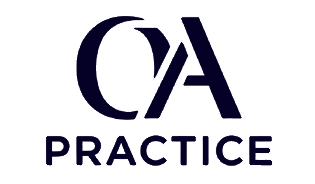D236 Pathophysiology - Set 4 - Part 1
Test your knowledge of technical writing concepts with these practice questions. Each question includes detailed explanations to help you understand the correct answers.
Question 1: A patient with portal hypertension develops dilated veins in the esophagus. What life-threatening complication can occur if these varices rupture during eating or coughing?
Question 2: Which cellular messenger system uses calcium ions as a second messenger to transmit signals from cell surface to nucleus?
Question 3: A newborn presents with ambiguous genitalia. Testing reveals congenital adrenal hyperplasia. Which hormone synthesis problem causes this condition?
Question 4: What mechanism allows certain bacteria to survive inside macrophages after being phagocytosed, causing persistent infections?
Question 5: During septic shock, what causes the dangerous drop in blood pressure despite increased cardiac output?
Question 6: A patient cannot digest lactose causing bloating and diarrhea after dairy consumption. What enzyme deficiency causes lactose intolerance?
Question 7: Which type of antibody appears first during acute infections and indicates recent pathogen exposure?
Question 8: What pathological change in blood vessels causes Raynaud phenomenon with color changes in fingers during cold exposure?
Question 9: A patient with chronic obstructive pulmonary disease develops right heart enlargement. What causes this cor pulmonale complication?
Question 10: Which cell type coordinates adaptive immunity by helping B cells produce antibodies and activating cytotoxic T cells?
Question 11: What protein forms amyloid plaques in brain tissue, contributing to Alzheimer disease pathology?
Question 12: During anaphylactic shock, what causes the rapid onset of life-threatening symptoms within minutes of allergen exposure?
Question 13: A patient with Addison disease has bronze skin pigmentation. What hormone elevation causes this distinctive skin darkening?
Question 14: Which protein deficiency causes emphysema in young adults by allowing unopposed elastase activity in lung tissue?
Question 15: What mechanism causes insulin resistance in type two diabetes, preventing cells from responding normally to insulin?
Question 16: During carbon monoxide poisoning, why does the patient appear pink despite severe tissue hypoxia?
Question 17: A pregnant woman develops eclampsia with seizures. What underlying pathophysiology causes this dangerous pregnancy complication?
Question 18: Which chromosome abnormality causes Down syndrome with characteristic facial features and intellectual disability?
Question 19: What causes jaundice in newborns when their immature liver cannot process the breakdown products of fetal red blood cells?
Question 20: A patient with Graves disease has bulging eyes. What autoimmune mechanism causes this exophthalmos complication?
Need Guaranteed Results?
Our exam support service guarantees you'll pass your OA on the first attempt. Pay only after you pass!
Get Exam Support